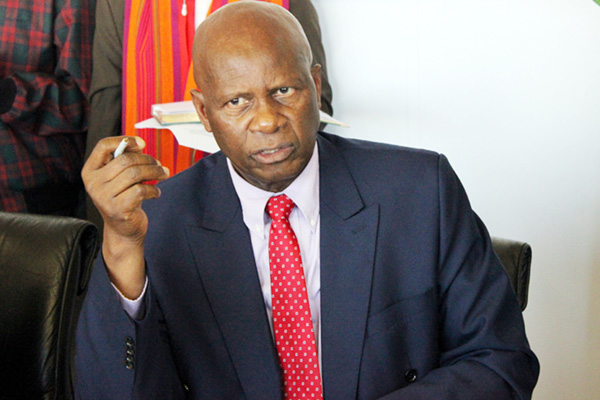
GOVERNMENT’S projected 4,8% economic growth in 2017 is highly “fictitious, if not day dreaming” given that the country is riddled with challenges such as cash crisis policy discord and corruption, analysts have said.
BY MTHANDAZO NYONI
They said the country was hamstrung by huge internal and external debts which have affected the flow of lines of credit from multilateral financial institutions.
According to the 2017 national budget strategy paper prepared by Finance and Economic Development minister, Patrick Chinamasa, Zimbabwe’s economy is projected to grow by 4,8% in 2017, from the sluggish 1,2% estimated this year, buoyed by agriculture.
Chinamasa revised the 2016 economic growth rate to 1,2% from the 2,7% forecast earlier this year on account of poor agricultural performance due to drought and subdued global commodity prices.
Economic analysts told Standardbusiness last week that Chinamasa’s projections were too ambitious and divorced from reality.
“We might be in for a better cropping season, but the money shortages right now are affecting the ability of nearly all the maize farmers to get the seed and fertiliser together, get to their lands and plant the crop,” said economic analyst, John Robertson.
“How much tobacco will be transplanted from seed beds to the lands also calls for money, but the shortage of cash during the tobacco selling season affected the amount of seed put into the seedbeds,” he said.
- Chamisa under fire over US$120K donation
- Mavhunga puts DeMbare into Chibuku quarterfinals
- Pension funds bet on Cabora Bassa oilfields
- Councils defy govt fire tender directive
Keep Reading
“This year is going to show negative growth and if we are lucky with the weather, we might just recover from the 2016 downturn in 2017.”
Robertson said growth depended on investment, which in turn was determined by confidence and the availability of money to invest.
He said: “Neither the money nor the confidence is in place right now, so I think the forecast is extremely ambitious.”
Another economic analyst, Reginald Shoko, said while it was critical to remain positive, it was important to put in place measures that would help stimulate economic growth.
“It’s important to remain positive but, do we have the fundamentals right now for such a projection? I doubt that and coupled with effects of drought, the most important thing is to get our policies clear and communicated from one stand point,” Shoko said.
“Corruption remains a big impediment to the economic recovery. Our production costs are way too much compared to our competitors in the region, which will lead to stagnant growth.”
Shoko said he remained positive on the growth of the economy but not beyond 2%, “unless [there is] a major shift in the economic fundamentals like costs of doing business, foreign direct investments, exports and dealing with corruption.”
“The government must concentrate on sectors of the economy where, as a country, we have a comparative advantage and also streamline expenditure,” he said.
Policy and economic analyst Butler Tambo said Treasury’s projected growth rate was highly “fictitious, if not day dreaming”.
He said the ZimAsset economic blueprint had projected the economy to grow by 3,4% in 2013 and 6,1% in 2014 and continue on an upward growth trajectory to 9,9% by 2018, which translates to an aggressive average annual growth rate of 7,3%.
Between 2009 and 2013, the Zimbabwean economy grew by an average of 7% per annum, which was good but not surprising as the country was growing from a very low base, he said.
“Now that the growth has started to whither as reflected by the continuous downward revision of the GDP growth figures by government from 2,7% to 1,2% in 2016, it’s clear that the country’s growth has moved into recession mode and now requires a significant amount of capital expenditure for both the private sector and State, to avoid a total collapse of the Zimbabwean economy,” he said.
Tambo said the country was likely to record a negative growth in 2017.
He said if bigger economies like South Africa had been downgrading their GDP forecasts to 0,5% from 0,9% for 2016 against the global growth of 3,4%, it was a wonder Zimbabwe — which is riddled by huge internal and external debts, grand corruption and policy discord — hope to achieve a growth rate of 4,8%.
“Our industry is not performing and is saddled with obsolete equipment, liquidity crunch, expensive and unavailable credit, high wages and high production costs against regional competitors and it is currently at 34% capacity utilisation,” said Tambo, who is also the deputy director of the Centre for Public Engagement.
As a solution to reviving the economy, Tambo said government needed to improve on measures to ensure transparency and accountability and ensure clear definition of all institutions to undertake debt management, adding there was need for a clear loan contraction process, inclusiveness in loan contraction and limit on external borrowings.











